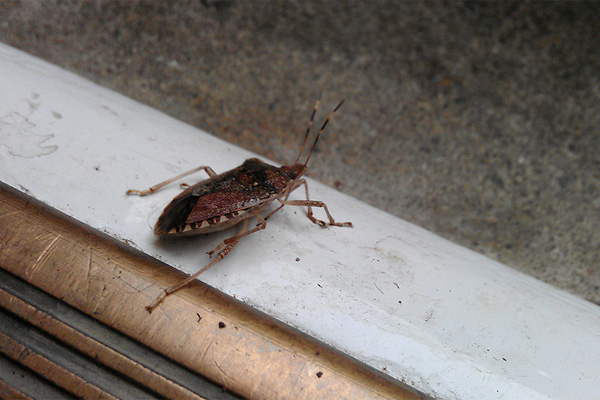As warmer weather approaches, there’s no mistaking the sound or smell of the pesky stink bug buzzing around indoors or out.
Named after the pungent, defensive odor they release to ward off predators or parasites, stink bugs have reached nuisance levels for residents in parts of New York over the past decade in addition to wreaking havoc on certain agricultural crops.
Where did stink bugs come from and how did they get here?
There are actually 20 or so native varieties of stink bug in New York, but the one that’s created recent issues here — the ‘brown marmorated stink bug’ — was first identified in Allentown, PA in the mid-late 1990s. It is believed to have been first introduced into the U.S. through a shipping container coming through the Port of Elizabeth, NJ, a large local shipping hub. That particular variety of stink bug, which has the signature shield-like shape common to all of them, is native to Japan, Korea, China, and Taiwan, and hails from Beijing.
How prevalent have they become?Is their smell hazardous?
Their odor is unpleasant but generally not dangerous, though some people report feeling a headache if they’re exposed to it for a long period of time.
What’s their life cycle?
In the spring when the weather gets warmer, usually in late May/early June, stink bugs feed, mate, and the females lay eggs, which hatch, go through five nymphal stages, and then become adults; depending on the temperatures, females could go through another egg-laying cycle as well. By August/September, adults begin taking in nutrients to get through the winter, at which point they go into a reduced state of hibernation. Stink bugs typically overwinter in the bark of standing dead trees or in structures; we typically see them begin to move indoors after the first frost in October.
What can area residents do to combat stink bugs?
Outside, residents can look at the foliage on their property and find the trees and plants harboring stink bugs. If you tap the foliage, the bugs will fall right off, so you can identify problem spots and choose to spray those. Indoors, especially in older homes, we recommend that homeowners caulk or otherwise seal up voids around door frames and windows, where stink bugs can lodge themselves during the wintertime. They also like the warmth of spaces like attics, so we advise people to put small screens on attic vents to prevent their access.
What’s the forecast for this year’s stink bug season?
Based on the harsh winter we had and the number of stink bugs that we went into overwintering last fall, we might be at a number similar to last year, it will be a mild to moderate year for stink bugs in 2015.
Stink bugs are a nuisance around the house, especially if you find them in bureau drawers, bags, or on drapes, where some people report they can leave stains on fabrics, but they don’t really do any serious damage once inside a home. The good news for area residents is that stink bug populations have been declining over the past several years — and many pets seem to enjoy chasing them.

